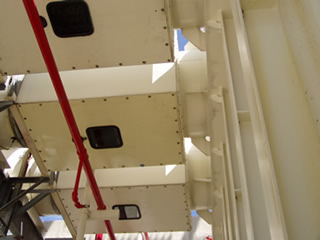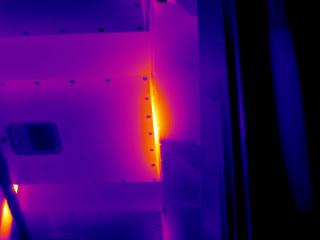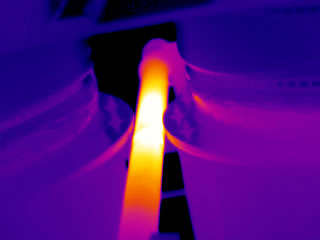The Power of Inductive Heating
Sponsored by:

The Power of Inductive Heating
The magnitude and intensity of inductive heating should not be underestimated when performing infrared inspections of electrical switchgear. Inductive heating is derived from the proximal interaction of non-current carrying devices with the magnetic field around energized conductors that are under load.
Inductive heating affects ferrous metals and causes inexplicable heating of non-current carrying components. The intensity of heating is a function of the amount of current passing through the conductor rather than the voltage class. In some cases, the affected components can reach temperatures in excess of several hundred degrees.
During a recent inspection at a power generation plant, two examples of inductive heating were observed near the plant’s step-up transformers. Images captured showed intense heating on a non-current carrying support pole and bus transition box, both of which were close to iso-phase bus entering a 13 kV to 230 kV step-up transformer. Temperatures documented on these devices were in excess of 400°F. Being the starting point of transmission service, a heavy current load would be expected on energized equipment.




Often, engineering designs on switchgear enclosures and other electrical equipment do not take into consideration the interaction of non-current carrying ferrous devices within electro-magnetic fields. In some cases, these situations can pose safety hazards when the affected component is in contact with combustible materials or heats structures that are accessible to human contact. When faced with perplexing heat patterns on components that should not be hot, inductive heating may be to blame.

